Torch Cactus Care 101: A Step-by-Step Guide
Looking for a unique and eye-catching plant to spice up your home? Allow me to introduce you to the Torch Cactus! Not only is it a fascinating and uncommon plant, but it’s also quite easy to take care of. In this blog, we’ll dive into the world of Torch Cactus care, specifically focusing on the five different types you can choose from. We’ll cover everything you need to know about keeping them healthy and happy, as well as the ideal growing conditions. By the end of this article, you’ll feel confident in selecting the perfect variety of Torch Cactus for your home or garden. Get ready to enjoy the vibrant and beautiful blooms of these stunning plants for years to come!

Related Post:
1,000 Types of Cactuses with Pictures [Cactus Identification]
Torch Cactus Care Guide
Taking care of torch cacti is pretty easy once they’ve settled into their environment. Here’s a complete guide to keeping your torch cactus healthy and vibrant:
Light
Give your torch cactus the right amount of sunlight. They like about 6-8 hours of direct sunlight per day. If you’re growing them indoors, a window facing east or south is perfect. If they need a little extra light, you can use fluorescent lights too.
Watering
Torch cacti can handle dry conditions, so only water them when the top 2 inches of soil are dry. Make sure not to overwater, as that can cause root rot. Water your torch cactus in the morning so it can dry off before nightfall. When in doubt, it’s better to underwater them. Torch cacti are tough and can handle longer periods of dryness.
Fertilizing
Torch cacti don’t need a lot of fertilizer, but it can help them grow and bloom. Use a water-soluble, low-nitrogen fertilizer once a month during the growing season. Be careful not to overdo it, as too much nitrogen can damage the leaves.
Soil
Torch cacti prefer well-drained, sandy soil that’s slightly alkaline. A mix of coarse sand, potting soil, and perlite or pumice works well. Make sure the soil doesn’t retain too much moisture to prevent root rot.
Temperature and Humidity
Torch cacti like warm, dry climates. They do best in temperatures between 65°F and 85°F. During winter, keep them around 55-60°F, but not lower than 45°F. Indoors, make sure they’re not exposed to temperatures below 50°F. Torch cacti can handle low humidity, so don’t worry too much about it. Just keep them away from humid places like bathrooms.
Pests and Diseases
Torch cacti are usually resistant to pests and diseases, but they can get mealybugs, aphids, or scale. Check for signs of pests regularly, like yellowing leaves or stunted growth. If you spot any, remove the affected parts and use an appropriate fungicide if needed. Taking good care of your torch cactus will help prevent pests and diseases.
Pruning
Pruning is important to maintain the shape and size of your torch cactus. Use sharp, sterilized scissors or pruning shears to remove dead, damaged, or diseased parts. You can also do some light pruning to encourage growth and health. Just be careful not to prune too much, as it can shock the plant and slow its growth.
Potting and Repotting
Choose a slightly larger pot when potting your torch cactus to allow for drainage and root growth. Use the well-draining soil mix mentioned earlier. Repot your torch cactus every two to three years to provide fresh nutrients and improve its health. Do this in late fall or early winter while the plant is dormant to minimize shock.
How To Propagate Torch Cacti
You can propagate torch cacti with seeds, cuttings, or offsets.
Seed Propagation
In spring, soak the seeds in lukewarm water for 24 hours. Plant them in shallow trays filled with sandy, well-draining soil. Keep the trays in a warm area, away from direct sunlight, and keep the soil moist. After about four weeks, the seedlings will sprout, and you can transplant them into individual pots.
Offset Propagation
To propagate with cuttings, use sterile scissors to clip a healthy stem from an existing torch cactus. Let the cutting air dry for a few days, then plant it in a well-draining soil mix. For offsets, carefully cut the base of the torch cactus and separate the halves to reveal new offsets. Plant them in individual pots.
No matter which method you choose, make sure your torch cacti get indirect sunlight and well-draining soil. Water them sparingly to avoid root rot.
Types of Torch Cactus
Torch cacti come in five different varieties. Let’s take a closer look at each one:
1. Golden Torch Cactus (Echinopsis spachiana):
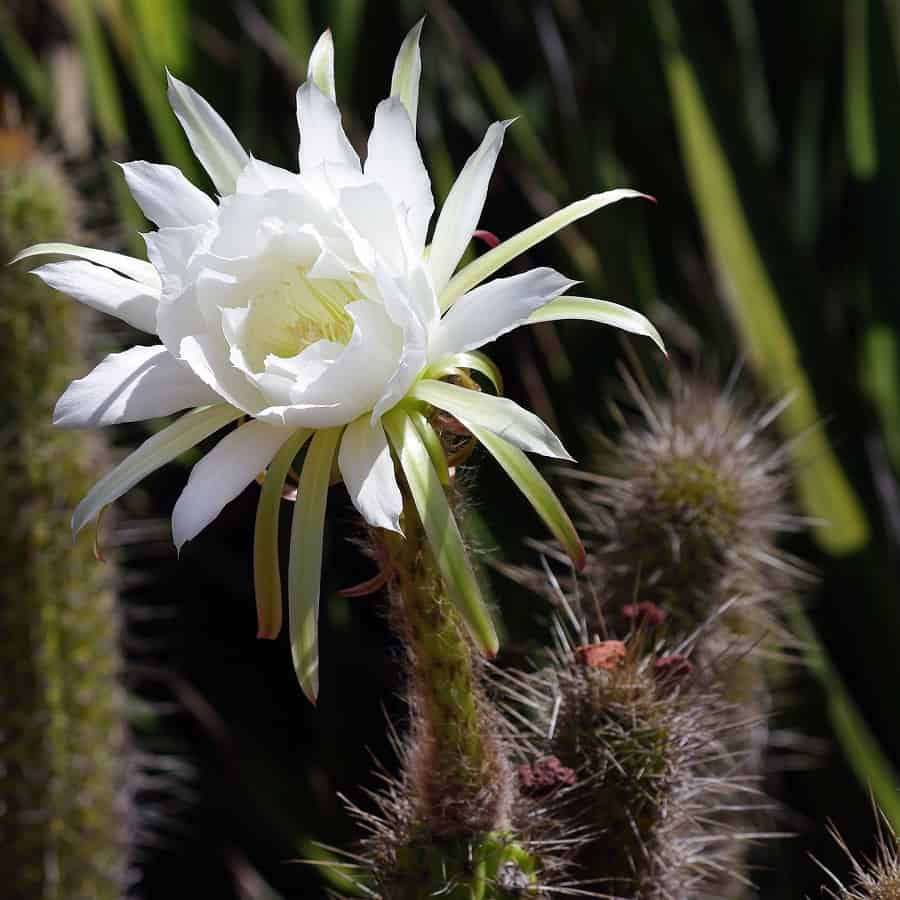
The golden torch cactus is popular for its bright yellow spines that can grow up to 4 inches long. It has a stunning yellow flower at the top, resembling a torch. In the wild, it can reach heights of 10-12 feet, but it’s usually smaller when grown indoors. These cacti love warmth, sun, and dry climates, making them a great choice for desert regions.
2. Silver/Wooly Torch Cactus (Cleistocactus strausii)
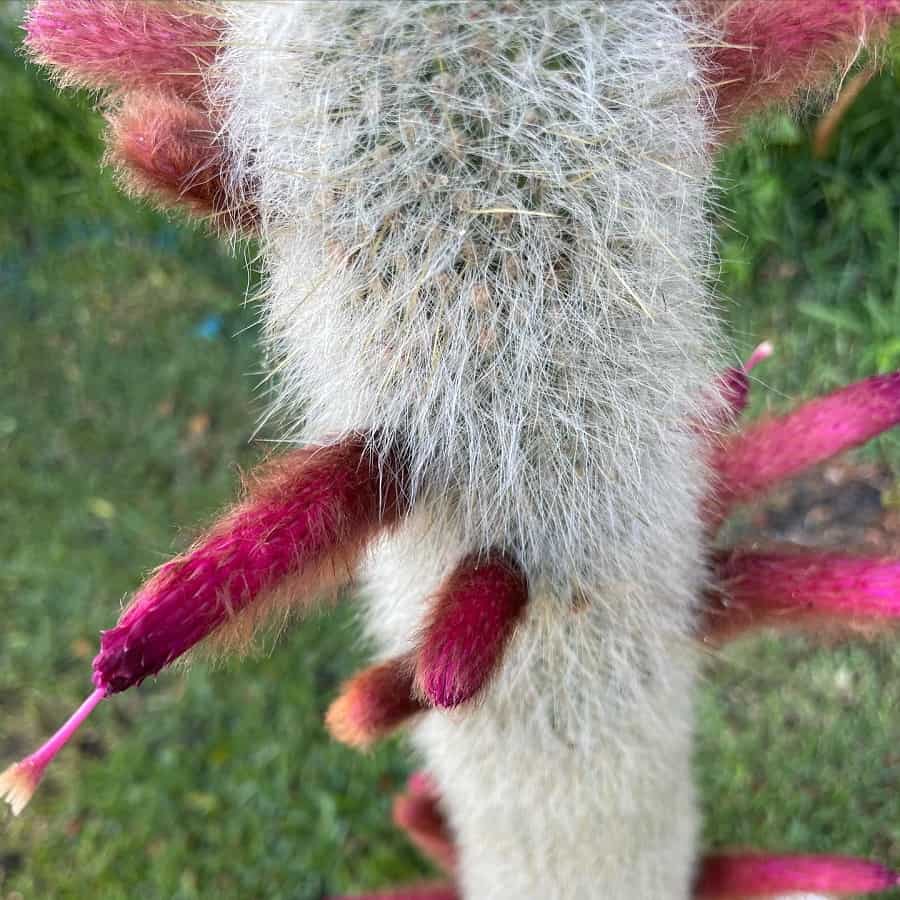
The silver or wooly torch cactus is known for its wooly covering that hides yellow spines underneath. It can grow up to 10 feet tall and has a cylindrical shape. This variety prefers dry climates with lots of sunlight and is quite hardy once established. It blooms with red to orange torch-like flowers during spring and summer.
3. Red Torch Cactus (Trichocereus huascha)
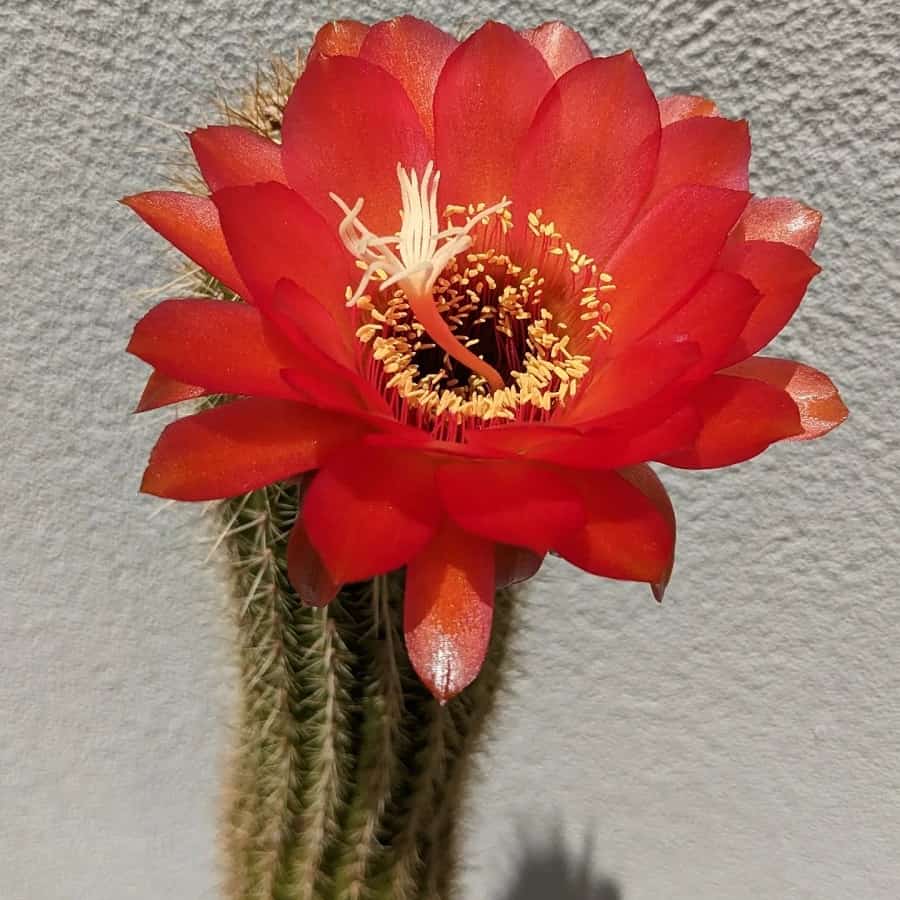
The red torch cactus stands out with its green color and striking red spines, which can grow up to 6 inches long. It has a creeper-like growth habit and can reach heights of 10 feet in its natural habitat. These cacti love warm climates with plenty of sun exposure and require little maintenance.
4. Columnar Torch Cactus (Trichocereus schickendantzii)
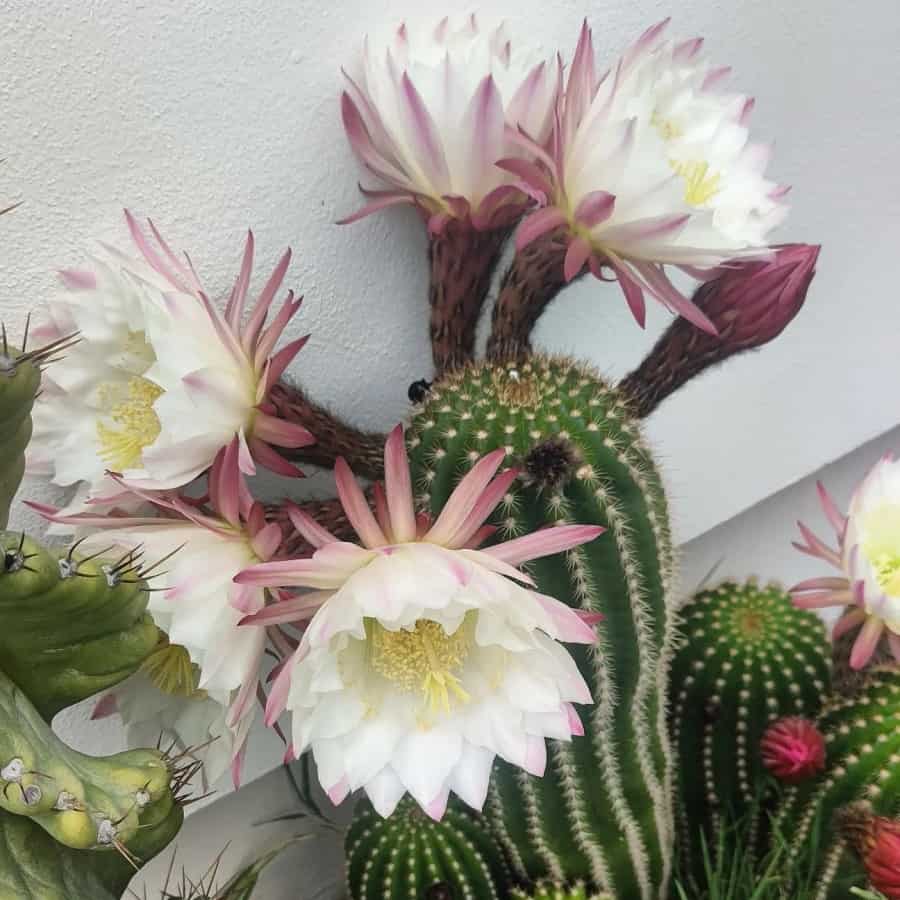
The columnar torch cactus is unique with its upright growth and can also grow up to 10 feet tall. It has a cylindrical shape and bright yellow spines that can reach 5 inches in length. This variety thrives in warm climates with lots of sunlight, making it perfect for desert landscapes. Like other torch cacti, it’s drought-tolerant and low-maintenance.
5. Bolivian Torch Cactus (Trichocereus bridgesii)
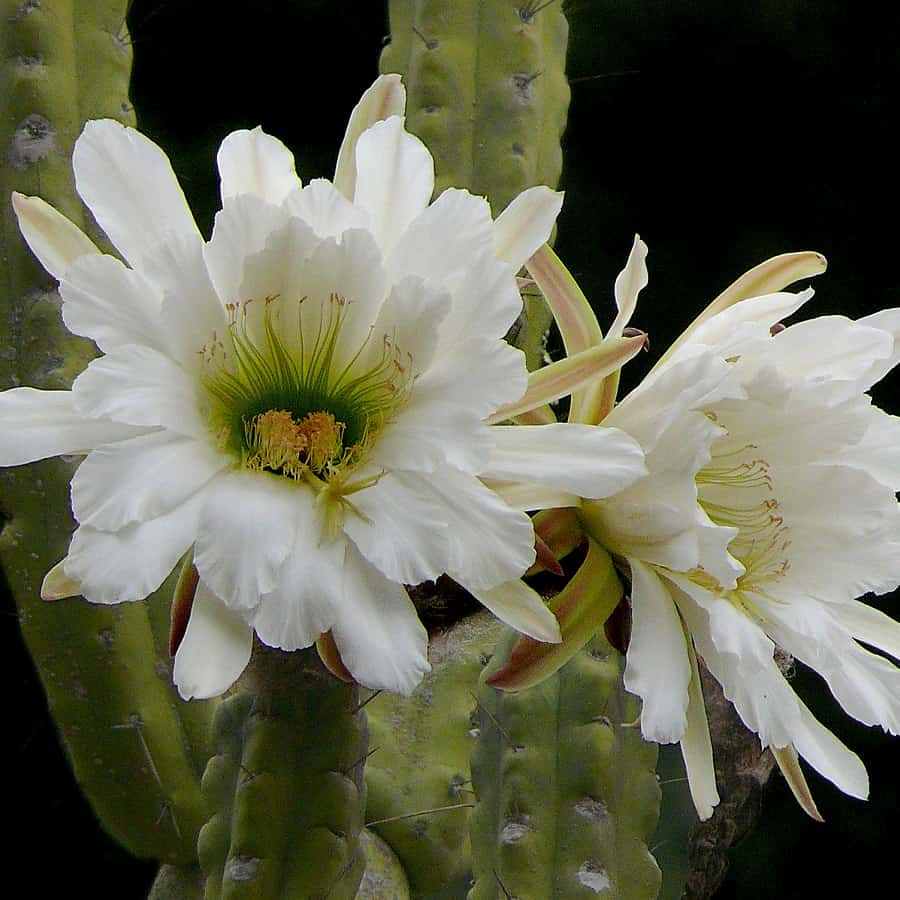
The Bolivian torch cactus has an upright growth habit and can reach heights of 10 feet. It has a cylindrical shape and features bright yellow spines up to 8 inches long. These cacti prefer warm climates with plenty of sun exposure and are well-suited for desert landscapes. Just like other torch cacti, they require minimal care once established.
Conclusion
In conclusion, torch cacti are fascinating plants that can add beauty and vibrant colors to any space with minimal maintenance. Whether you choose the golden, silver, red, columnar, or Bolivian torch cactus, each variety offers its own unique characteristics and growth habits. By providing the right conditions of sunlight, well-draining soil, and appropriate watering, you can ensure the health and happiness of your torch cacti. These resilient plants can thrive in warm climates and are perfect for desert landscapes. With their stunning blooms and striking forms, torch cacti are sure to captivate and bring joy to your home or garden for years to come.
